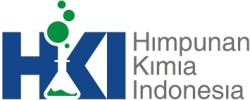Pengembangan Video Pembelajaran Berbasis Animaker pada Materi Penerapan Kimia dalam Kehidupan Sehari-hari di SMA Fase E
Development of Animaker-Based Learning Videos on the Application of Chemistry in Daily Life in High School Phase E
Abstract
Chemistry can sometimes be difficult because the teaching methods are boring, useless, and completely focused on memorization. This research aims to produce interesting animation-based learning materials about the application of chemistry in everyday life and to determine its feasibility and practicality. Animaker-based learning videos are created and packaged using Animaker.com, Microsoft PowerPoint, Canva, Genially, and Google Sites. This research uses Research & Development techniques and the ADDIE model (Analysis, Design, Development, Implementation, And Evaluation). The results of the assessment by material experts and media experts regarding the feasibility of this learning video are in the very feasible category with the average validation results obtained by material experts being 97% and 96% for media experts. Based on the assessment results, the average student response shows that every aspect of interest, material and language received a very good or very practical category, with a percentage score of 90% in the Animaker-based animated video learning media in the material Application of Chemistry in Everyday Life for class X for high school this is very practical to use.
Downloads
References
UNESCO, “Education for all global monitoring report 2006”, Paris: UNESCO, 2006.
R. Asyhar, “Kreatif Mengembangkan Media Pembelajaran”, Jakarta: Gaung Persada (GP) Press, 2011.
Rusman, “Model-Model Pembelajaran : Mengembangkan Profesionalisme Guru”, Bandung : CV. Alfabeta, 2012.
Savitri and Manuaba, “Pengembangan Video Animasi Berbasis Model PBL sebagai Media Pembelajaran Muatan Bahasa Indonesia untuk Siswa Kelas V”, Jurnal Pendidikan Dan Konseling (JPDK), 4(2), 344–354, 2022.
Sánchez-Auñón and Férez-Mora, “Films for EFL: Exploring the Perceptions of a High School Teacher”, Indonesian Journal of Applied Linguistics, 11(1), 49–59, 2021.
M. Berlian and R. Vebrianto, “Development of Webtoon Non-Test Instrument as Education Media”, International Journal of Evaluation and Research in Education, 10(1), 185–192, 2021.
Andriani and Mery, “Pengembangan Modul Kimia Berbasis Kontekstual Untuk Membangun Pemahaman Konsep Siswa Pada Materi Asam Basa”, Hydrogen: Jurnal Kependidikan Kimia, Vol. 7. No. 1, 2019.
Kemdikbudristek, “Ilmu Pengetahuan Alam”, Kementerian Pendidikan, Kebudayaan, Riset, Dan Teknologi”, Jakarta, 2021.
S. Novrita, "Implementasi Kurikulum Merdeka Belajar di Sekolah Penggerak Sman 10 Kota Jambi", Universitas Jambi, 2022.
Bahriah and E. Sapinatul, “Aplikasi Kurikulum Merdeka: Fenomena Learning Loss Pada Pembelajaran Kimia”, Bandung: Penerbit Media Sains Indonesia, 2023.
Kemdikbudristek, ”Kurikulum Untuk Pemulihan Pembelajaran. Kementerian Pendidikan, Kebudayaan, Riset, Dan Teknologi”, Jakarta, 2022.
Mashuri, D. Khoiriyah and Budiyono, “Pengembangan Media Pembelajaran Video Animasi Materi Volume Bangun Ruang untuk SD Kelas V”, Pengembangan Media Video Animasi, 8(5): halaman 1-11, 2020.
M. Ika and S. Irianto, “Pengembangan Media Animaker Materi Keliling dan Luas Bangun Datar Menggunakan Kalkulator Di Kelas IV SD UMP”, Jurnal El-Muhhibb: Jurnal Pemikiran Dan Penelitian Pendidikan Dasar, 5, 1–11, 2021.
N. Amalia, “Pengembangan Media Pembelajaran Video Animasi Pada Materi Asam Basa Di MAN 2 Banda Aceh”, UIN Ar-Raniry, Aceh, 2023.
Asriadi and Lazulva, “Desain Dan Uji Coba Video Pembelajaran Berbasis Literasi Sains Dengan Menggunakan Scratch Pada Materi Kesetimbangan Kimia”, Universitas Islam Negeri Sultan Syarif Kasim Riau, 2021.
P.R. Dewi, “Penerapan Model Problem Based Learning Dengan Media Powtoon Untuk Meningkatkan Hasil Belajar Kimia” Universitas Halu Oleo, Kendari, 2024.
N.I. Simatupang, F. Naqsyahbandi and F.W. Mulyopratikno, “Analisis Penggunaan Metode Dan Media Pembelajaran Pada Materi Hidrokarbon di Tingkat Sekolah Menengah Atas”, Universitas Kristen Indonesia, Jakarta, 2024.
S. K. Sholikhah, “Desain Dan Uji Coba Video Pembelajaran Kimia Model ICARE Menggunakan Software Adobe After Effect Pada Materi Larutan Elektrolit dan Non Elektrolit”, UIN Sultan Syarif Kasim Riau, 2023.
Sugiyono, “Metode Penelitian Kuantitatif, Kualitatif dan R&D”, Bandung:Alfabeta, 2011.
Djuandi, “Buletin BSNP: Instrumen Penelitian Buku Teks Pelajaran Tahun 2014”, Badan Standar Nasional Pendidikan, Jakarta, 2014.
A. Sudjono, “Pengantar Statistik Pendidikan”, Jakarta: Rajawali Pers, 2010.
Aiken, “Three coefficients for analyzing the reliability and validity of ratings, Educational and Psychological Measurument”, Journal Articles; Reports - Research; Numerical/Quantitative Data, 45(1), 131- 142, 1985.
Purwanto, “Metodologi Penelitian Kuantitatif untuk Psikologi dan Pendidikan”, Yogyakarta : Pustaka Pelajar Offset, 2012.
S. Arikunto, “Prosedur Penelitian Suatu Pendekatan Praktik”, Jakarta: Rineka Cipta, 2010.
Riduwan, “Skala Pengukuran Variabel-variabel Penelitian”, alfabeta, 2013.
S. Sumarsih, and A. Slamet, “Pengerbangan Multimedia Pembelajaran PPKn Kelas VIII Sekolah Menengah Pertama”, JKTP: Jurnal Kajian Teknologi Pendidikan, 4(4),368-377, 2021.
 This work is licensed under a Creative Commons Attribution-ShareAlike 4.0 International License. Copyright is retained by the authors, and articles can be freely used and distributed by others.
This work is licensed under a Creative Commons Attribution-ShareAlike 4.0 International License. Copyright is retained by the authors, and articles can be freely used and distributed by others.

 Irma Sukmawati(1*)
Irma Sukmawati(1*)












